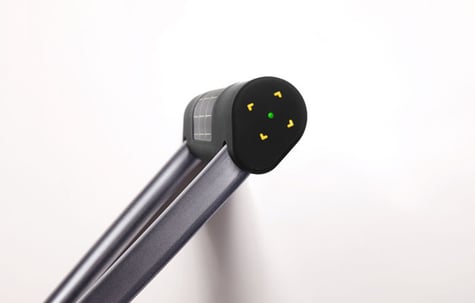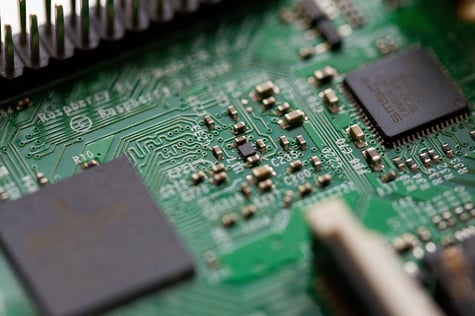Orbiting Earth right now are approximately 92 satellites powering the GNSS frequencies that we are familiar with. This includes the global positioning system (GPS), Galileo (Europe), GLONASS (Russia) and Beidou (China).
Despite their initial launch for military usage, GNSS antenna allow masses of devices – including many handhelds and wearables – to their location and geography. They power navigation, mapping, geo-tracking and fitness trackers. However, the very nature of GNSS frequencies pose tricky tests for engineers.
Now that new, innovative embedded antenna have come to market, even small devices can work on GNSS frequencies - despite signals radiating from over 20,000km away. For challenging RF designs, including small and compact devices, it’s essential that your design allows for sufficient performance.
Finding sufficient space within a device is more difficult now than ever. This makes your selection and integration of a wireless antenna a more integral factor of your final design. To get the best possible performance, whilst staying within the permutations of your design brief, you’ll want to consider the following set of issues before you go ahead and select a ceramic patch antenna:
Cost vs. Performance
In open space, with plenty of ground plane space, it is true that ceramic patch antenna can provide superior performance. It’s also true that large ceramic patch antennas are relatively cheap. However, it’s highly unlikely you’ll be supplied a brief for a product that has limitless dimensions available for an antenna.
Smaller ceramic patch antennas can become costly, yet cannot offer the same levels of performance. This is simply due to the size of the ceramic dictating the volume of RF energy it can effectively collect.
For this reason, smaller patches (in smaller dimensions than 17 x 17mm) will typically be unable to achieve omni-directional gain. This limits their performance in devices that aren’t operating parallel to the source radiation (i.e. the sky). They’re also moderately difficult to amplify without noise detrimentally impacting the final performance of the device.
If a large footprint won’t cause integration issues for your device, then a ceramic patch antenna may provide higher levels of performance. However, in smaller devices higher levels of performance can be achieved in a smaller footprint, and usually at a lower cost through a surface mountable antenna.
Sky Visibility
Ceramic patch antenna can only thrive when they’re pointed towards the direction GNSS signals are broadcast from - that’s the sky. For effective performance, ceramic patch antennas need to be pointed upwards wherever possible.
For applications that run parallel to the horizon – like most cars and drones – this may not become an issue. When placed in an appropriate location, ceramic patches will be able to work and function accurately in most cases. However, this limits their usefulness within trackers, wearables, handheld devices and other complex devices that require an antenna with low directivity.
When not facing the sky, ceramic patch antenna may suffer from a prolonged time-to-first-fix, limiting the function of a device. Position drifting may also occur, which can result from the highly reflective nature of GNSS signals.
Supporting Wider Frequency Bands
GNSS operate across a wide range of frequency bands, yet many devices support multiple systems. But achieving sufficient performance across varying wavelengths can become more difficult with small ceramic patches.
In applications smaller than 25mm2, ceramic patches will only effectively operate on narrow frequency bands. As the ceramic acts as a gateway for RF signal, the larger the patch, the wider range of bands the antenna can effectively operate on. By contrast, a surface mountable antenna can work effectively on these wide frequency bands.
Depending on your application, this may not pose design issues. For instance, a device operating parallel to the horizon that only needs to support a single frequency may find a small ceramic patch to provide sufficient performance.
Design Suitability
Due to the size of the wavelengths, a larger than normal ground plane size will be necessary for embedded applications. Typically, this will be upwards of 60 x 60mm, and even higher in some cases.
The nature of the frequency makes it more vital that these guidelines are followed, however, ceramic patch antenna may differ in this regard; ceramic patch antennas generally require symmetrical dimensions of ground plane on each side of the antenna. Surface-mountable antennas have more variation in their recommended placement - some of which recommend placement on the corner of the PCB.
It is important, that during antenna selection, you do not purely review datasheets and select the antenna that provides the highest performance parameters. What is more important is that you select an antenna appropriate to your design, so that the challenges in integration are minimised.
Conclusion
By their very nature, GNSS frequency bands are difficult to design for. Particularly in small devices, where a whole host of issues can arise during development. Considering the most appropriate antenna at the beginning of the process can save you from headache and can help you avoid costly design oversights.
Antenna selection is key for these applications, equally so is antenna integration/design-in. Your brief will shed light on the most appropriate antenna, based on their guidelines. Reviewing datasheets will only provide you surface-level insight into the value of a particular antenna.




